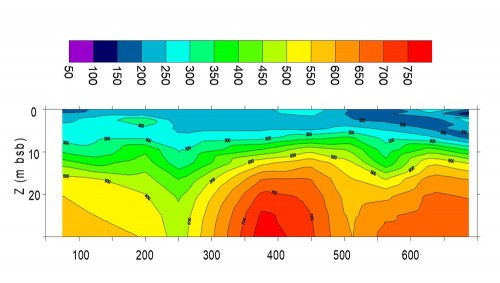Sea surface waves can penetrate below acoustic masks linked to under saturated shallow sediments. It is also possible to measure a decreasing shear wave velocities with depth, which means that soft formations beneath hard formations can be detected. These properties are quite important for some projects.
On site the shear modulus of very soft to over-consolidated formations can be estimated along continuous profiles over several kilometers with this non-destructive, economical and recognized method.
 Shear wave velocity profile
Shear wave velocity profile